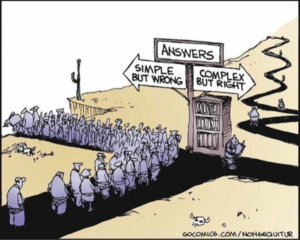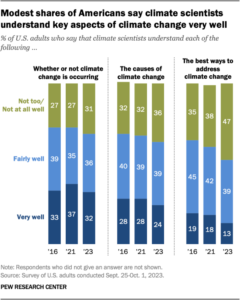As I reflect on my career in the Energy Utility business, I remember how many times customers became angry because they didn’t have choices. Some wanted to choose their supplier thinking that shopping for electricity would give them lower costs. Most now agree that this didn’t prove to be true. Yes, there might have been times when they had lower cost choices, but they generally had to learn to live with volatility in prices. They liked the low-price times but not the high price times.
Many thought that offering customers rate choices would be better and would make them happy. That led to the creation of time-of-use, critical peak pricing, and ultimately real time pricing. Some were delighted, but most found they didn’t know how to make the best choice for their situation. For many who didn’t understand their hour-by-hour use of electricity, these choices were daunting.
The purists then came up with online energy information systems assuming customers wanted to exercise choice, but once again found that most would not spend the time to understand their choices.
All of this is a lead up to a recent email I received from A&T offering me lots of choices. Take a close look at this graphic and see that each choice required me to talk to a different branch of AT&T. That may make sense to many of you because you know how complex choices are in these areas.
But the underlying assumption is that I want that level of choice. I am a tech savvy person; however, I have no idea which of these choices I want to exercise. AT&T is assuming two things: first that I can choose and that I really want to talk to so many different people. I don’t.
What’s worse, AT&T now has fractured their customer service response the same way on just about everything and anything. You call what you think is the customer help line and find out that there is another phone number you must call to get help. Making matters worse, you waited half an hour in the queue only to find that out. And worse yet, you couldn’t understand what the person one the other end of the call said because that person does not speak English.
No, we don’t want that level of choice. We want to call an agent for AT&T who can navigate all our needs. That is the key. The word agent. An agent is a person who is empowered to act on behalf of another. Empowered … wow … someone who has the power to help you.
I wish we had that choice with AT&T. Other companies seem to manage this well, for instance we have found agents with American Express and Vivant home security profoundly helpful. They are knowledgeable, reachable, helpful, and speak clearly in English.
The result? We have been working diligently to get AT&T out of our lives, which is a choice that we clearly understand!





